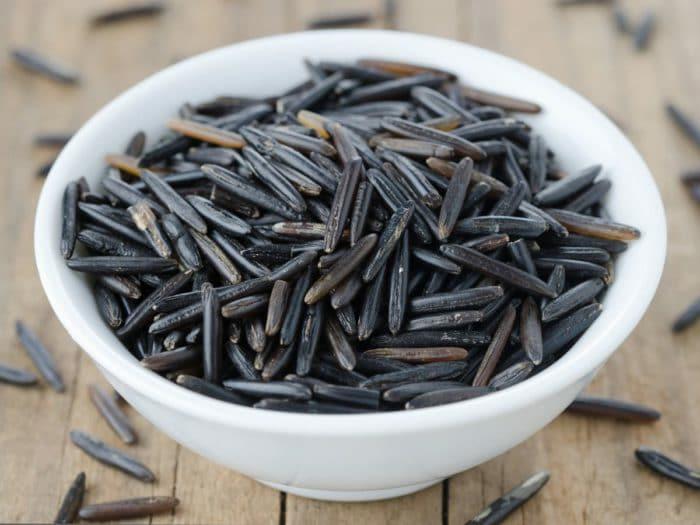Assam's Annapurna Seed Library creating a 'safe haven' for indigenous varieties of rice

We have heard about libraries which consist of books, database, documents, manuscripts, etc and it functions as archives for the people. In today's scenario, where most of the things are on the verge of extinction, Mahan Chandra Borah runs a unique library in the foothills of eastern Himalayas in Assam to preserve the rare indigenous rice varieties, one grain at a time. This library will help in securing genetic diversity for climate resilience.
' Annapurna Seed Library' is the only library in northeast India to save the indigenous rice seeds, Borah's mission is to collect and promote the cultivation of heirloom rice in that particular region because of the growing climate concern. He started the library 12 years ago from Meleng in Assam. A history-graduate turned farmer was curious to find out the local varieties of rice in the nearby villages or hamlets. His subsequent efforts made it possible to build a library which now includes different varieties of rice like flood-tolerant, aromatic, black rice, etc.
We have heard about libraries which consist of books, database, documents, manuscripts, etc and it functions as archives for the people. In today's scenario, where most of the things are on the verge of extinction, Mahan Chandra Borah runs a unique library in the foothills of eastern Himalayas in Assam to preserve the rare indigenous rice varieties, one grain at a time. This library will help in securing genetic diversity for climate resilience.
' Annapurna See Library' is the only library in northeast India to save the indigenous rice seeds, Borah's mission is to collect and promote the cultivation of heirloom rice in that particular region because of the growing climate concern. He started the library 12 years ago from Meleng in Assam. A history-graduate turned farmer was curious to find out the local varieties of rice in the nearby villages or hamlets. His subsequent efforts made it possible to build a library which now includes different varieties of rice like flood-tolerant, aromatic, black rice, etc.
Initially, he started with only 3 varieties but now he has 250 varieties of rice, mostly from northeast India. There is a unique quality about these rice, they can combat in acute weather conditions such as drought, cyclone, floods, etc. Majority of people don't cultivate traditional varieties of rice as they prefer high yielding varieties or hybrid.
Borah's 'Annapurna' library is a sister library of the California-based Richmond Grows Seed Lending Library. The idea behind Richmond Grows is that “plant the seeds, let some go to seed, then return some of these next generation seeds for others to borrow.” This concept will help people to borrow seeds from the 'Annapurna', conserve it and lend the seeds to those who need them.
He is also planning to open this library in other parts of the state in Kaziranga, Balipara, and Sadiya. Farmers go in large number to deposit seeds in ' Annapurna' library. Borah sows the seeds in a plot of land and later on, anyone who wants the seeds can borrow it. This process goes on in series. He also tells the farmers about the characteristics of the seeds and educates them about the same so that they purchase the variety of rice wisely.
To educate the university students about the varieties and diversity of traditional rice, Borah conducts a workshop for them so that the students can preserve the indigenous varieties and he is also planning to include several communities in this mission.

According to Ministry of Agriculture’s agricultural statistics for 2015-16, India produced 104.31 million tonnes of rice over 43.38 million hectares. As rice one of the important crop cultivated across the northeastern belt of India. It is cultivated in all the geographical conditions in Assam and other states from hill slopes to rain-fed lowland areas. There are four varieties of rice cultivars in Assam- Bao (deepwater rice), Sali (winter rice), Ahu (autumn) and Boro (summer). All these varieties contain different traits such as aromatic, stickiness, high starch content, etc. The principal reason behind such a wide variety is the environmental conditions which are extensively diverse in traditional landraces.
A recent conference at IIT-Guwahati on Biodiverse, 2018, Borah uncovered a wide variety of rice for the students and attending participants. For instance, 'Tulsi Sali' is suitable for low land areas. He also told the qualities of various rice varieties and who can consume the same. Kokua Bora’s grains are red and is very tasty as a parboiled rice. Burma Black (black rice) needs two whistles (on a pressure cooker).
According to Assam’s Action Plan on Climate Change (SAPCC 2015-2020), the state comes under the lowest adaptive capacity, greatest climate sensitivity, and maximum vulnerability. The draft report also focused on issues like reduction in the availability of water for irrigation, erratic floods and droughts, degrading soil health. The ongoing course of rainfall unfold a reduction in the number of rainy days but a spike in extreme rainfall days coupled with enhanced intensity. In near future, rainfall is expected to increase in most of the areas in the Assam.
Most of the area is chronically flood-prone and in coming years, the flood will swallow around 1 million hectares. As the state is humid and hot, there are chances of diseases and pests. The problem has become worst because of overlapping growing seasons, intensive cultivation of susceptible modern HYVs, use of high doses of chemical fertilizers and incautious use of plant protection chemicals. Indigenous varieties of rice is disappearing fast and collecting them should deserve priority.
First published: 12 February 2018, 18:31 IST






![BJP's Kapil Mishra recreates Shankar Mahadevan’s ‘Breathless’ song to highlight Delhi pollution [WATCH] BJP's Kapil Mishra recreates Shankar Mahadevan’s ‘Breathless’ song to highlight Delhi pollution [WATCH]](http://images.catchnews.com/upload/2022/11/03/kapil-mishra_240884_300x172.png)

![Anupam Kher shares pictures of his toned body on 67th birthday [MUST SEE] Anupam Kher shares pictures of his toned body on 67th birthday [MUST SEE]](http://images.catchnews.com/upload/2022/03/07/Anupam_kher_231145_300x172.jpg)






